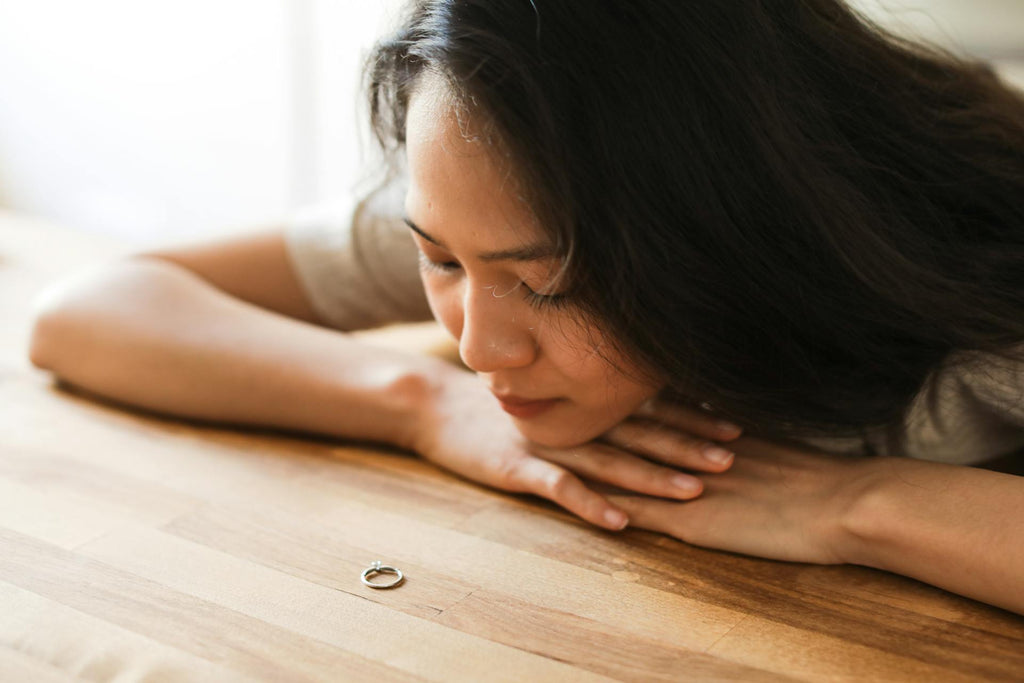
Sorting through and disposing of the belongings of a loved one who has passed away is undoubtedly one of the most challenging tasks one can face. It’s a process that requires careful consideration, emotional fortitude, and a delicate balance between holding onto memories and moving forward with life. In this exploration, we delve into the intricacies of this process, offering insights on when and how to approach it with sensitivity and mindfulness.
The decision of when to dispose of a deceased loved one’s belongings is deeply personal and varies from individual to individual. There’s no universal timeline or set of rules governing this process. Instead, it’s a matter of personal readiness and circumstance. For some, the immediate aftermath of the funeral and burial may be too overwhelming to even contemplate sorting through belongings. Others may find solace in the act of organizing and decluttering shortly after the loss. Ultimately, the timing should be determined by the closest family members or those entrusted with the responsibility of handling the estate. Several factors can influence the timing of this task. Practical considerations such as obtaining the death certificate, settling legal matters, and completing probate proceedings may necessitate waiting before embarking on the process of disposing of belongings. Emotionally, individuals may need time to grieve and come to terms with their loss before confronting the tangible reminders of their loved one’s absence.
Several factors can influence the timing of this task. Practical considerations such as obtaining the death certificate, settling legal matters, and completing probate proceedings may necessitate waiting before embarking on the process of disposing of belongings. Emotionally, individuals may need time to grieve and come to terms with their loss before confronting the tangible reminders of their loved one’s absence.
In cases of unexpected death, where the shock and disbelief are still fresh, it’s advisable to refrain from hasty decisions about belongings. Rushing to dispose of items in the immediate aftermath of a loss may lead to regrets later on. Taking at least two weeks to process the loss and gather emotional strength can provide a more stable foundation for making decisions about belongings.
Conversely, in situations where the passing of a loved one is anticipated, such as in palliative care, there may be an opportunity to prepare for the eventual task of sorting through belongings beforehand. This proactive approach can alleviate some of the emotional burden and facilitate a smoother process of decision-making.

Strategies for Sorting Belongings
Once you've determined the right time to begin sorting through your loved one's belongings, it's helpful to approach the task with care and sensitivity. Here are some strategies to consider:
1. Start with Small Steps
Tackling the entire task of sorting through a loved one's belongings can feel overwhelming. Begin with small, manageable steps, such as focusing on one room or category of items at a time. Breaking the task down into smaller chunks can make it feel more manageable.
2. Set Realistic Expectations
Understand that sorting through belongings is not a task that can be completed in a single day. It's a process that may take weeks or even months, depending on the volume of items and your emotional readiness. Set realistic expectations for yourself and be patient with the process.
3. Create a Sorting System
Establish a sorting system to help organize belongings into categories such as keep, donate, sell, or discard. Consider using labels, bins, or boxes to clearly distinguish between these categories. Having a structured approach can make the process more efficient and less emotionally draining.
4. Honoring Memories
Take time to reminisce and honor memories associated with each item as you sort through them. Share stories with family members and friends, preserving the legacy of your loved one through storytelling.
5. Seek Support
Sorting through belongings can be emotionally taxing, and it's okay to ask for help and support from friends or family members. Having someone to accompany you during the process can provide emotional comfort and practical assistance.
6. Respect Personal Boundaries
Recognize that different family members may have different attachments to certain items. Be respectful of each other's feelings and opinions when making decisions about what to keep, donate, or discard.
7. Preserve Sentimental Items
While it may be tempting to discard everything in an attempt to move on, carefully consider the sentimental value of certain items. Some belongings may hold deep emotional significance and serve as cherished reminders of your loved one.
8. Take Breaks When Needed
Sorting through belongings can be emotionally draining, so it's essential to listen to your body and mind. Take breaks when needed, step away from the task if it becomes too overwhelming, and practice self-care throughout the process.
9. Seek Professional Assistance if Necessary
If the task of sorting through belongings feels insurmountable or if family conflicts arise, consider seeking the assistance of a professional organizer, therapist, or estate planner who can provide guidance and support.
10. Closure and Moving Forward
As you progress through the process of sorting through belongings, allow yourself to experience a range of emotions, including sadness, nostalgia, and even relief. Finding closure does not mean forgetting your loved one but rather finding a sense of peace and acceptance amidst the grief. Engaging in this process with mindfulness and intentionality is crucial. Rather than viewing it as a mere chore to be completed, consider it an opportunity to honor the memory of your loved one. Gathering close family members or friends to assist in sorting through belongings can transform the task into a meaningful and shared experience. Sharing stories and reminiscing about the significance of certain items can bring comfort and strengthen bonds during a difficult time.
Engaging in this process with mindfulness and intentionality is crucial. Rather than viewing it as a mere chore to be completed, consider it an opportunity to honor the memory of your loved one. Gathering close family members or friends to assist in sorting through belongings can transform the task into a meaningful and shared experience. Sharing stories and reminiscing about the significance of certain items can bring comfort and strengthen bonds during a difficult time.
When confronted with the myriad possessions left behind by a loved one, it’s important to approach the task with sensitivity and discernment. Not everything holds sentimental value, and not everything needs to be kept. Adopting a systematic approach, such as sorting items into categories (gift, sell, donate, throw away), can help streamline the process and prevent overwhelm. Items with sentimental value or historical significance may be earmarked for gifting to family members or close friends who can appreciate their significance. These items serve as tangible reminders of the deceased and can bring comfort to those who receive them. It’s essential to respect individual preferences and not feel obligated to keep everything out of a sense of duty.
Items with sentimental value or historical significance may be earmarked for gifting to family members or close friends who can appreciate their significance. These items serve as tangible reminders of the deceased and can bring comfort to those who receive them. It’s essential to respect individual preferences and not feel obligated to keep everything out of a sense of duty.
Items in good condition that hold practical value but are no longer needed by family members may be suitable for selling or donating. Estate cleanouts, garage sales, or online platforms can facilitate the redistribution of these items to new homes where they can continue to be of use.
For smaller items that are still in good condition but may not have broad appeal, donating to charity organizations can be a meaningful way to extend the life of belongings and benefit those in need. Local churches, thrift stores, and nonprofit organizations often welcome donations of household items, clothing, and personal effects.
It’s natural to encounter difficulty when parting with certain items, particularly clothing and jewelry that carry the essence of the departed loved one. Clothing, in particular, may retain the scent or memory of the person, making it challenging to let go. However, by considering options such as gifting to family members or repurposing fabric for new creations, it’s possible to honor the legacy of the clothing in a meaningful way. Jewelry holds a special place in many cultures as a symbol of love and remembrance. While parting with jewelry can be emotionally challenging, gifting pieces to relatives or close friends who cherish the memory of the deceased can ensure that they continue to hold significance for years to come.
Jewelry holds a special place in many cultures as a symbol of love and remembrance. While parting with jewelry can be emotionally challenging, gifting pieces to relatives or close friends who cherish the memory of the deceased can ensure that they continue to hold significance for years to come.
The decision of when to stop wearing a wedding ring after the death of a spouse is deeply personal and varies for each individual. Some may choose to remove the ring as a symbolic gesture of moving forward, while others may prefer to keep it as a cherished memento of their union. Repositioning the ring or wearing it in a different manner can provide a compromise that honors the memory of the spouse while acknowledging the need for personal growth and healing.
 Important documents and personal correspondence should be handled with care and attention. While it may be tempting to discard seemingly insignificant items, it’s essential to proceed with caution to avoid discarding anything of importance. Birth certificates, insurance information, health records, and personal letters may hold sentimental or practical value and should be preserved accordingly.
Important documents and personal correspondence should be handled with care and attention. While it may be tempting to discard seemingly insignificant items, it’s essential to proceed with caution to avoid discarding anything of importance. Birth certificates, insurance information, health records, and personal letters may hold sentimental or practical value and should be preserved accordingly.Redecorating the home after the death of a spouse can be a cathartic process that facilitates healing and renewal. While the thought of changing familiar surroundings may initially evoke feelings of apprehension, creating a new environment can signify a fresh start and allow for the integration of memories in a different context. Incorporating cherished belongings into everyday decor or repurposing furniture can serve as a tribute to the departed spouse while fostering a sense of continuity and resilience.

-----------------------------------------------------------------------------------------------------------------------------------
Join us in helping families honor the memory of their loved ones and pets through art!
Our Affiliate Program is now available at https://www.pulvisurns.com/pages/affiliate-program-by-pulvis-art-urns
